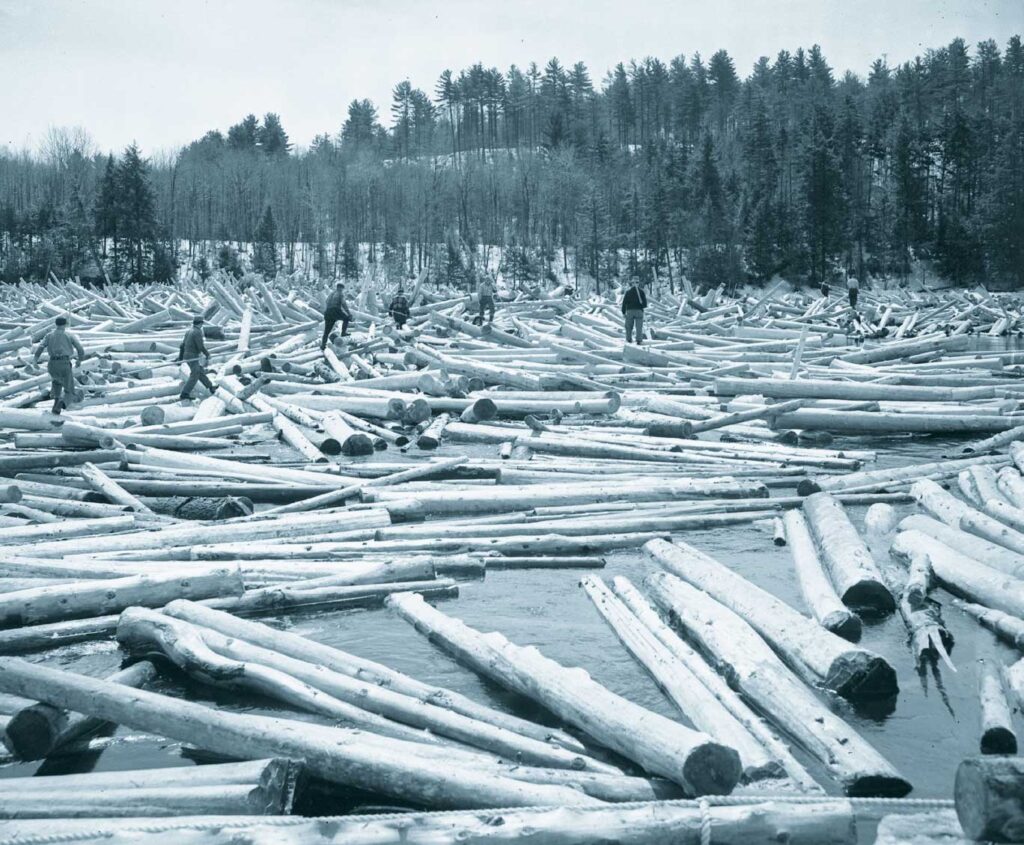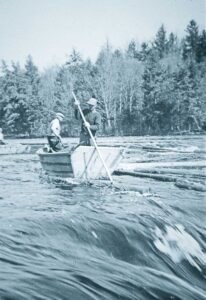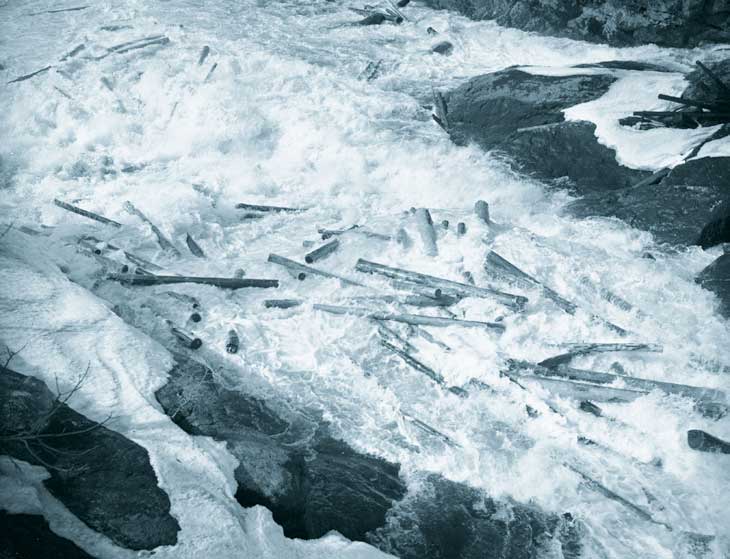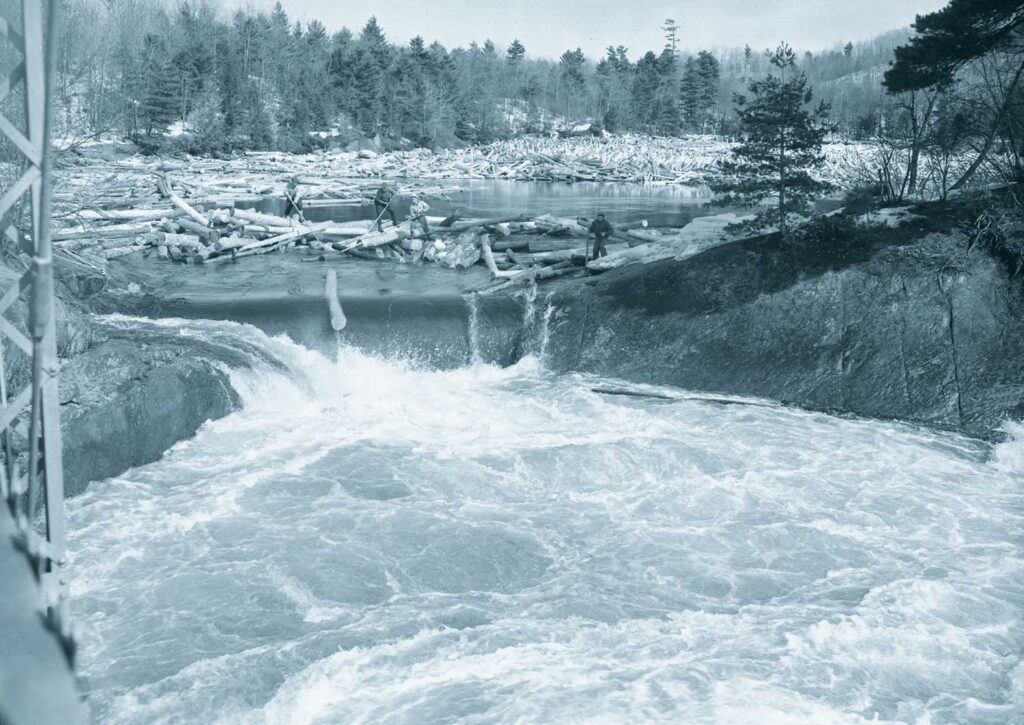By Howard Thomas

This is Part 2 of “The Fabulous Carnahans,” a story among many collected by upstate New York folklore enthusiast, Howard Thomas. It appears here with permission of Bob Igoe, president and owner of North Country Books, Utica, N.Y. Look for Part 1 in the October 2023 issue.—William J. O’Hern

Two years after the Carnahan brothers came to Wilmurt, New York, Sol was conducting the Trenton Falls Lumber Company’s spring drive near Jock’s Lake outlet. The creek was at flood peak, a boiling, seething mass of brown water. A dangerous jam developed, so Ab took Dan Pinney and a boatman and rode to the head of the jam, where he and Dan jumped onto the logs while the boatman remained ready to take them to shore when the jam broke.
The two riverjacks went to work with their peaveys and succeeded in loosening logs near a big rock. The jam began to move before they could get back to the boat, and the creek became filled with dancing, tumbling logs. Ab and Dan jumped from log to log to get as near shore as possible. Seeing open water ahead, they each selected a log and began to ride it, paddling and pushing toward shore with their peaveys. Ab made out well, but Pinney was being drawn toward rapids which led to a waterfall no man had ever ridden successfully. Ab, seeing his pal’s predicament, deliberately placed his peavey against Dan’s log and sent it toward shore. The force of the shove sent Ab’s log back into the stream, but he paddled back and gave Dan’s log another push. Pinney jumped from his log and swam to the shore and safety.

Not so Carnahan. His log was caught by the swirling water. With great skill, he “cuffed” the log into position and faced the white water ahead. He might have ridden to safety, but the log struck a submerged rock. He was thrown far ahead into the roaring stream. Pinney saw him rise to the surface only to be crushed to death between two colliding logs. His body was recovered hours later far down the creek. Sol took it to New Brunswick for burial. Ab Carnahan, at the age of twenty-two, had given his life to save that of another man.
Erv stayed on with Sol. Like Ab, he was a soft-spoken, intelligent lad who did many errands for his elder brother, for his drinking habits had eliminated him from work on the rivers.
Sol was driving logs up in the Moose River country one spring and Erv was sent to Utica for the payroll money. Muggins Laird wanted to go along, though Erv and Sol both knew Muggins would kill a man to get a drink of liquor. Sol waited patiently for payroll money that never arrived. Erv and Muggins were seen getting off the train and starting toward the Carnahan lumber camp. That was the last anyone ever saw of Erv Carnahan.
Old-timers say that fingers of suspicion were pointed at Muggins, who seems to have won the dislike of all the jacks, but nothing could ever be proved. Eph Wheeler, who knew Sol well in the old days, said that he met Sol in a Utica hotel a few years before Sol’s death. Eph asked Sol if he had any word from Erv, whereupon Sol shook his head sadly.

The Carnahans have become more or less of a legend along West Canada Creek. The few men left who once worked for Sol will always say, “Sol Carnahan? He was a great old Sol.”
